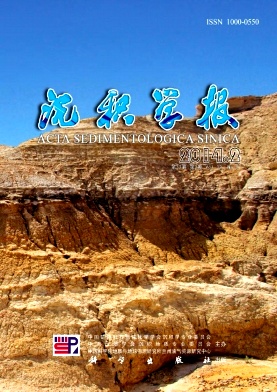Difference and Origin of Cambrian Saddle Dolomite in Tarim Basin, Northwest China
- Publish Date: 2014-04-10
-
Key words:
- saddle dolomite /
- internal structure /
- Cambrian /
- Tarim Basin
Abstract: There are several kilometers thick dolomites in Cambrian of Tarim basin. Saddle dolomite could be found in the strata, which record fluid evolution during diagenesis. The basic geology, internal structure and geochemical characteristics of saddle dolomite viod-filling were analyzed by electron microprober to reveal the relation between fluid and tectonic evolution in dolomite diagenesis in the study. Three main types of saddle dolomite were indentified in the study area: dedolomitzation zone saddle dolomite, Fe-rich zone saddle dolomite and Fe-rich and Mn-rich saddle dolomite. There are some differences in three types of dolomite. The dedolomitzation zone saddle dolomite often is milky white, irregular lumps, more uniform internal, and dedolomitization zonal edge. The dolomite void-filling has low Fe-Mn content. The δ18O values of dolomite void-filling are -12.2‰ to -10.1‰. The uniform temperature of inclusions are in the 87℃~140℃, The value of 87Sr/86Sr are 0.708 979 to 0.709 038. The Fe-rich zone saddle dolomite often are blue-gray, jagged output in dolomite cracks or dissolved pores, its internal structure is very complex, it can be divided into three parts: core, zone and outer edge. The core of crystal are dark, enriched white calcite inclusions spreading like star point, the edge of crystal was zonal because of the different iron content. The inner ring with rich calcite inclusions is comprised by alternating dark and light colored stripes, the outer ring does not basically have calcite inclusions, but most of dolomite has only one dark layer of light-colored pinstripe. The dolomite viod-filling has high Fe content. The δ18O values of dolomite viod-filling are -9‰~-5‰(VPDB), The uniform temperature of inclusions are 100℃~150℃, The value of 87Sr/86Sr are 0.708 824~0.709 391. The Mn-rich saddle dolomite is mostly meat-red, jagged output fractures in dolomite or dissolved pores. The internal structure of the dolomite void-filling is very complex, and the development of multi-stage and multi-type stripes, showing a "roses" shape. It can be simply divided into two parts: the inner zone and the outer zone. The inner zone with a small amount of calcite inclusions is lighter colors and blurred boundaries. The stripes are thin and numerous. The outer zone is the lighter color ring, stripes is little and thick. There is often only contain a thick bright stripes. The bright-dark boundary is obvious. Many different between inner and outer ring are caused by iron and manganese content. The dolomite void-filing have the highest value content of Fe and Mn. The measuring points of the outer ring in the crystal with a bright stripe on the Fe content are up to 124 172 μg/g. The Fe content are from 19 950 to 38 057 μg/g in most of the points, while the inner ring with the Fe content 6 907~25 091 μg/g and Mn content of the highest values up to 5 056 μg/g. Three types of dolomite formed in different environment, the nature of the formation fluid was also significant differences. Dedolomitzation zone saddle dolomite may be related to the inter-layer fluid, Fe-rich zone saddle dolomite and Fe-rich and Mn-rich saddle dolomite may have been impacted by fault-related fluid, and the formation fluid of Fe- rich and Mn-rich saddle dolomite may come from more deep than the former.
| Citation: | Difference and Origin of Cambrian Saddle Dolomite in Tarim Basin, Northwest China[J]. Acta Sedimentologica Sinica, 2014, 32(2): 253-259. |






 DownLoad:
DownLoad: